MACLAURIN SECTRIX

| next curve | previous curve | 2D curves | 3D curves | surfaces | fractals | polyhedra |
MACLAURIN SECTRIX

| Curve studied by Maclaurin in 1742, Plateau in 1828 and
Kempe in 1895.
Colin Maclaurin (1698-1746): Scottish mathematician. Other names: Plateau sectrix, isocyclotomic curve, spider (Heymann 1899). Loria p. 460. |
The Maclaurin sectrices are the loci of the intersection
point between two lines each in uniform rotation around a fixed point.
| Given the fixed point O and A(a,
0), if the angular speed of the line DA
passing by A is equal to k times that of the line D0
passing by O, then we get:
Polar equation in the frame with pole O: Polar equation in the frame with pole A: We get all the sectrices by assuming |k| > 1 (swapping O and A amounts to changing k into 1/k). |
The two inverses of a Maclaurin sectrix with respect to
the 2 poles are still Maclaurin sectrices: the inverse of
with respect to O is
,
and the inverse of
with respect to A is
.
When
has a ruler-and-compass construction and when k is an integer, the
Maclaurin sectrix is a |k|-sectrix,
since the ratio between the angles
is constant equal to k. And it is also a |k–1|-sectrix
since
.
Remarkable special cases for
= 0 (i.e. when, at some point during their motion, the two lines coincide):
| k= | equation with pole O | equation with pole A | name of the curve | figure | remark |
| 2 (or 1/2) | circle |
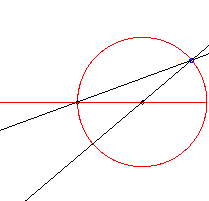 |
This is equivalent to the central angle theorem.
What is the curve described by the intersection point of the two lines passing by the seconds hands of two watches places in the same plane? |
||
| -1 | line |
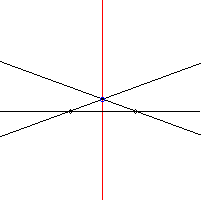 |
The bisector of an isosceles triangle is also its mediatrix! | ||
| 3 (or 1/3) | Maclaurin trisectrix | 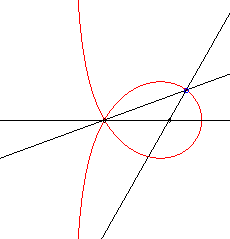 |
|||
| 3/2 (or 2/3) | trisectrix limaçon |
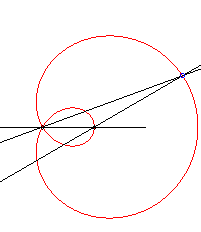 |
|||
| -2 (or -1/2) | hyperbola with eccentricity 2 |
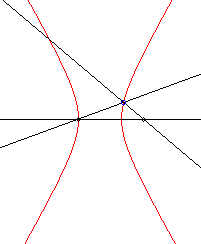 |
Note that among the 3 curves ,
each one is the inverse of the other two (the case k = 3 gives the
3 previous curves).
Special cases with
:
| k = 1 | circle |
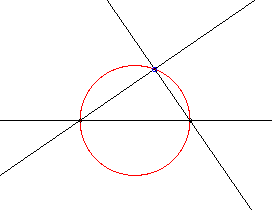 |
Remark: this is equivalent to the inscribed angle theorem | ||
| k = 2 | right strophoid |
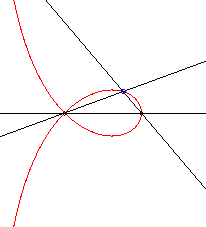 |
|||
| k = - 1 | rectangular hyperbola |
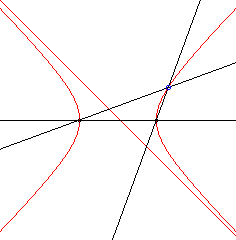 |
Other examples:
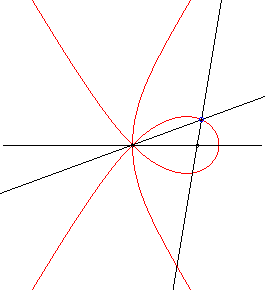
k = 4, q0 = 0; it is also a trisectrix curve (cf. the remark above). |
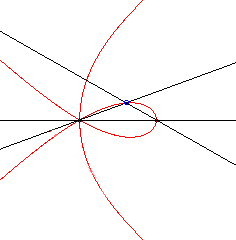
k = 3, q0 = p/2 |
The limit case where one of the poles is at infinity is
none other than that of the Dinostrate
quadratrix and its generalisations.
| next curve | previous curve | 2D curves | 3D curves | surfaces | fractals | polyhedra |
© Robert FERRÉOL 2017